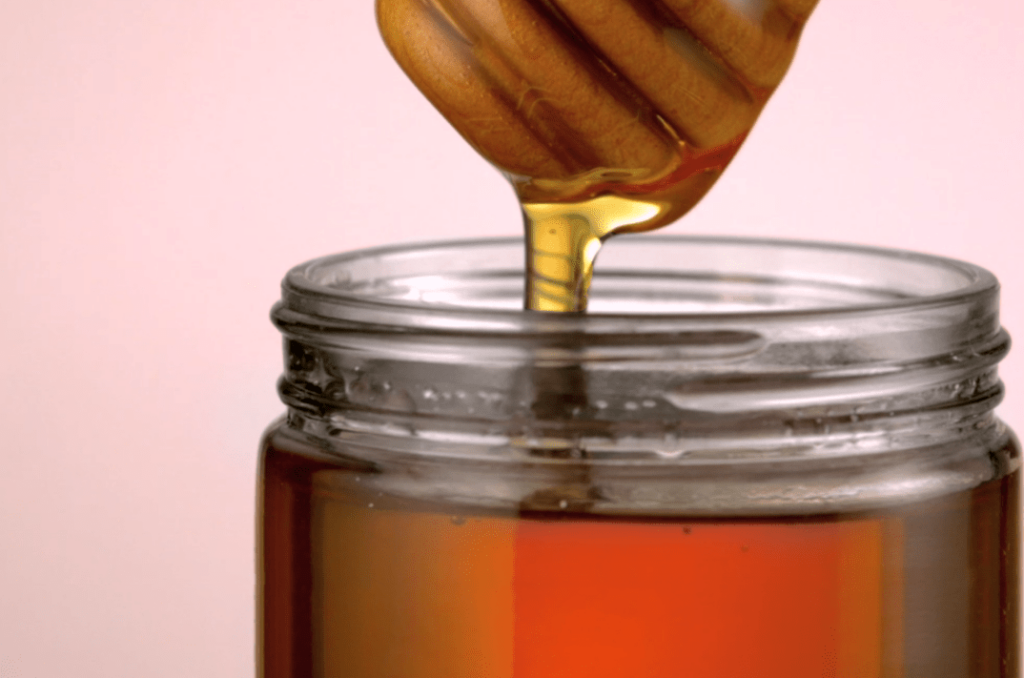What is Fasting? Aetas Protocols
The thought of not having food for extended periods of time doesn’t exactly fill most people with joy and yet fasting is becoming increasingly popular. It’s actually a practice that dates back centuries and there are many variations on how to fast and why it’s good for you – keep reading to find out more on what it is, how it can benefit you and how to start.

If we look back, fasting has existed since prehistoric times. Humans are designed to be able to survive without food for extended periods of time. Otherwise, our species would not have survived as long1Patterson, R. E., Laughlin, G. A., LaCroix, A. Z., Hartman, S. J., Natarajan, L., Senger, C. M., Martínez, M. J., Villaseñor, A., Sears, D. D., Marinac, C. R., & Schneiderman, N. (2015). Intermittent Fasting and Human Metabolic Health. Journal of the Academy of Nutrition and Dietetics, 115(8), 1203–1212.. Fasting has been practised throughout history for religious, spiritual, health, and medical reasons. Many religions include fasting as a form of purification, it’s been used for medical treatments and in modern times, fasting has gained popularity as a health and weight loss practice2,Browning, J. L., Baxter, J., Satapati, S., & Burgess, S. M. (2012). The effect of short-term fasting on liver and skeletal muscle lipid, glucose, and energy metabolism in healthy women and men. Journal of Lipid Research, 53(3), 577–586.3Brandhorst, S., Choi, I. H., Wei, M., Cheng, C., Sedrakyan, S., Navarrete, G., Dubeau, L., Yap, L., Park, R. S., Vinciguerra, M., Di Biase, S., Mirzaei, H., Mirisola, M. G., Childress, P., Ji, L., Groshen, S., Penna, F., Odetti, P., Perin, L., Longo, V. D. (2015). A Periodic Diet that Mimics Fasting Promotes Multi-System Regeneration, Enhanced Cognitive Performance, and Healthspan. Cell Metabolism, 22(1), 86–99..
The Science of Fasting
Fasting can be practised in different forms and there are many opinions on what you can and can’t do during a fast, but according to science it simply means taking in no calories for a period of time.
When fasting we trigger a series of physiological changes including a process called autophagy which breaks down defective or unnecessary components in cells and protects cells from further damage, in other words, our body is eating our fat cells. Fat, also known as the adipose tissue, is one of the safest place to store toxins and chemicals that are harmful to our bodies, therefore when these fat cells are notbeeing recycled but left for too long, the adipose tissue can become toxic for the body and lead to inflammation, mutation of genes and disease.4,Mandal S, Simmons N, Awan S, et al. Intermittent fasting: eating by the clock for health and exercise performance BMJ Open Sport & Exercise Medicine 2022;8:e001206. 5Stekovic, S., Hofer, S. J., Tripolt, N. J., Aon, M. A., Royer, P., Pein, L., Stadler, J., Pendl, T., Prietl, B., Url, J., Schroeder, S., Tadic, J., Eisenberg, T., Magnes, C., Stumpe, M., Zuegner, E., Bordag, N., Riedl, R., Schmidt, A., Madeo, F. (2019). Alternate Day Fasting Improves Physiological and Molecular Markers of Aging in Healthy, Non-obese Humans. Cell Metabolism, 30(3), 462-476.e6. . Essentially, the autophagy process is our body’s resident ‘cleaner’ that recycles rubbish into energy that can be used, the main goal being to keep the body balanced when the conditions inside our cells change or when the body is under stress6De Cabo, R., & Mattson, M. P. (2019). Effects of Intermittent Fasting on Health, Aging, and Disease. The New England Journal of Medicine, 381(26), 2541–2551..
Another process that is activated is called ketosis and is due to our body not receiving glucose and fat from food. Normally, our liver converts food into glucose for energy, but when we fast, the liver kick-starts an alternative ancient process of energy production, where it turns body fat cells into ketones. Sounds technical right? Essentially ketones are used as an alternative source of energy for the body, and so when we don’t eat for an extended period, our body shifts from burning glucose for energy to burning fat4Mandal S, Simmons N, Awan S, et al. Intermittent fasting: eating by the clock for health and exercise performance BMJ Open Sport & Exercise Medicine 2022;8:e001206..
When we eat high sugary food or carbs and your blood sugar rises, as a response your pancreas produces the hormone insulin that help to keep your blood sugar level. It is these ‘spikes’ in our blood sugar and the accompanying insulin beeing released that has negative health consequences for us. Worryingly, research shows that sugar and high carb diets are one of the prime factors leading to early death due to chronic diseases such as Heart Disease, Alzheimers, and Diabetes. Studies has shown that people run faster and think clearer when they produce ketones. One theory is, that back in time in the hunter gatherer period, this was nature’s way of making sure that when we were hungry on the great plains and had no food, the body would give us just an extra kick of energy for us to be able to catch that prey to eat.
We have been told for years that fat is bad for us, but science is teaching us now that fat in itself is not bad for us. It seems to be sugar that is the bad guy here. Whilst we still have to stay away from the wrong type of fats and eat it in the right amount. So how do we know we are producing ketones? We can measure whether our body is producing ketones by using keto strips, or with a veto breathalyser device. By seeing what your ketone levels are, you can gain insight into how effective your fasting is, and how much fat you are burning.
Aetas sells one of the most effective ketone measurement devices on the market. We also carry non-sugar electrolytes in small packs for you to consume everyday during a fast. So if you want to get started trying out fasting and improving your health, we can deliver a personalised starter kit. All of our Health Intelligence examinations also come with a full guide and personalised fasting protocol for you. We are all unique with different goals we want to achieve therefore it’s important to check what style of fasting will work best for you.
Top Health Benefits of Fasting
• Help promote weight loss by reducing calorie intake and increasing metabolism
• Improved insulin sensitivity which may help lower the risk of type 2 diabetes2Browning, Jeffrey D et al. “The effect of short-term fasting on liver and skeletal muscle lipid, glucose, and energy metabolism in healthy women and men.” Journal of lipid research vol. 53,3 (2012): 577-586.
• Has been shown to reduce inflammation which may be beneficial for people with conditions such as arthritis and asthma4Mandal, S., Simmons, N., Awan, S., Chamari, K., & Ahmed, I. (2022). Intermittent fasting: eating by the clock for health and exercise performance. BMJ Open Sport & Exercise Medicine, 8(1), e001206.
• Can help to lower blood pressure, cholesterol levels, and the risk of heart disease4Mandal, S., Simmons, N., Awan, S., Chamari, K., & Ahmed, I. (2022). Intermittent fasting: eating by the clock for health and exercise performance. BMJ Open Sport & Exercise Medicine, 8(1), e001206.
• Fasting has also been linked to improved cognitive function and may reduce the risk of neurodegenerative diseases such as Alzheimer’s and Parkinson’s4Mandal, S., Simmons, N., Awan, S., Chamari, K., & Ahmed, I. (2022). Intermittent fasting: eating by the clock for health and exercise performance. BMJ Open Sport & Exercise Medicine, 8(1), e001206.
Types of Fasting
To understand how to start fasting it’s important to understand the different types and what can work for you and your lifestyle. Factors such as age, sex, diet, weight, diagnoses, medicin, menstruation cyklus should all be taken into consideration before starting. Generally there are 2 main types of fasting including:
Prolonged fasting
Prolonged fasting is when you go without eating any calories for several days in a row, usually between 2 and 5 days or more. This type of prolonged fasting can initiate many metabolic processes, such as ketosis, where the body uses stored fat for energy, as well as promote cellular regeneration through breakdown processes1,Patterson, R. E., Laughlin, G. A., LaCroix, A. Z., Hartman, S. J., Natarajan, L., Senger, C. M., Martínez, M. J., Villaseñor, A., Sears, D. D., Marinac, C. R., & Schneiderman, N. (2015). Intermittent Fasting and Human Metabolic Health. Journal of the Academy of Nutrition and Dietetics, 115(8), 1203–1212.6De Cabo, R., & Mattson, M. P. (2019). Effects of Intermittent Fasting on Health, Aging, and Disease. The New England Journal of Medicine, 381(26), 2541–2551..
Intermittent fasting
Intermittent fasting, also known as time-restricted fasting, means you cycle between periods of eating and periods of not eating. The most common way is to fast for 16 hours and then eat during an 8-hour window. 1Patterson, R. E., Laughlin, G. A., LaCroix, A. Z., Hartman, S. J., Natarajan, L., Senger, C. M., Martínez, M. J., Villaseñor, A., Sears, D. D., Marinac, C. R., & Schneiderman, N. (2015). Intermittent Fasting and Human Metabolic Health. Journal of the Academy of Nutrition and Dietetics, 115(8), 1203–1212..
Intermittent fasting can have the drawback of losing lean muscle mass, especially for people above 40. Therefore, prolonged fasting in short periods seems to be a better option for healthy individuals (non-overweight) above 40.
How to Fast?
The most effective way to fast depends on who you are and what you are trying to achieve7Visioli, F., Mucignat-Caretta, C., Anile, F., & S, P. (2022). Traditional and Medical Applications of Fasting. Nutrients, 14(3), 433.. Dr. Jason Fung, a Canadian nephrologist and world-leading expert in intermittent fasting, compares glucose to a refrigerator:

“It is easy to move food in and out of the refrigerator, but storage space is limited. Fat is much harder to access, but you can store unlimited amounts. Think of fat as a freezer – you can store a lot of food in the freezer, but it is harder to get to compared to the refrigerator. When the refrigerator is empty, we go to the freezer. So when we feel hungry, it is not because we are lacking food, as we have a lot of food in the freezer. The feeling of hunger is the body wanting sugar.”8Fung, J. (2016, January 28). Obesity – Solving the Two-Compartment Problem – Fasting 21. The Fasting Method.
Dr. Jason Fung
MD, Nephrologist
What can I eat?
The starting point is not to eat anything. But you still need to consume electrolytes to maintain balance. This can be difficult for some people, so having clear soup or bouillon can help. Remember that it is better to be close to fasting rather than not at all.
Can I drink water?
It is important to drink plenty of water during fasting, especially when you feel thirsty. On one hand, you should be aware of drinking extra water as you normally take in a large part of your daily fluid intake through food. On the other hand, you should also be aware of not drinking too much water as this can deplete your vitamin and mineral stores (including the important electrolytes).
How long should I fast?
Clinical effect is seen after about 48-72 hours. In extreme fasting, people fast for up to 5-7 days, but this requires sufficient knowledge on the subject. Contact us for a free consultation and we can advise you on what works best for you and your body.
How can I prepare before starting to fast?
In the week leading up to your fast, you can start to reduce your daily carbohydrate intake – a low carb diet or keto diet – as it makes it easier to enter a “fasting state”.
How do you break an extended fast?
Eating the right foods is important for extended fasting benefits like renewing cells and improving brain function. If fasting for 5+ days, gradually increase calories with broth, fermented veggies, then a small, low-fat meal with veggies and lean protein after waiting 30 minutes.

KEY TAKEAWAY
Fasting has been a part of human history for centuries, and modern science is now revealing its many benefits. By triggering processes like autophagy and ketosis, fasting can help our bodies get rid of toxins, burn fat for energy, and improve our overall health. Although fasting can have certain drawbacks such as losing lean muscle mass, when done correctly with individualised protocols, it can be one of the most effective things you can do for longevity. Fasting can be an effective way of losing weight and optimizing health, but it’s a complex intervention. Weight, diet, age, and lifestyle all need to be taken into consideration before starting out. Fasting is not for everyone, and there is not one right way of doing it. Always talk to a healthcare professional before starting.
LITERATURE REFERENCES
Make your move
Optimise your health so that you live a longer and healthier life
Aetas is a clinic for precision medicine and molecular laboratory. We specialise in Longevity, evidence-based health optimization and preventive treatments.
Enquire Now







